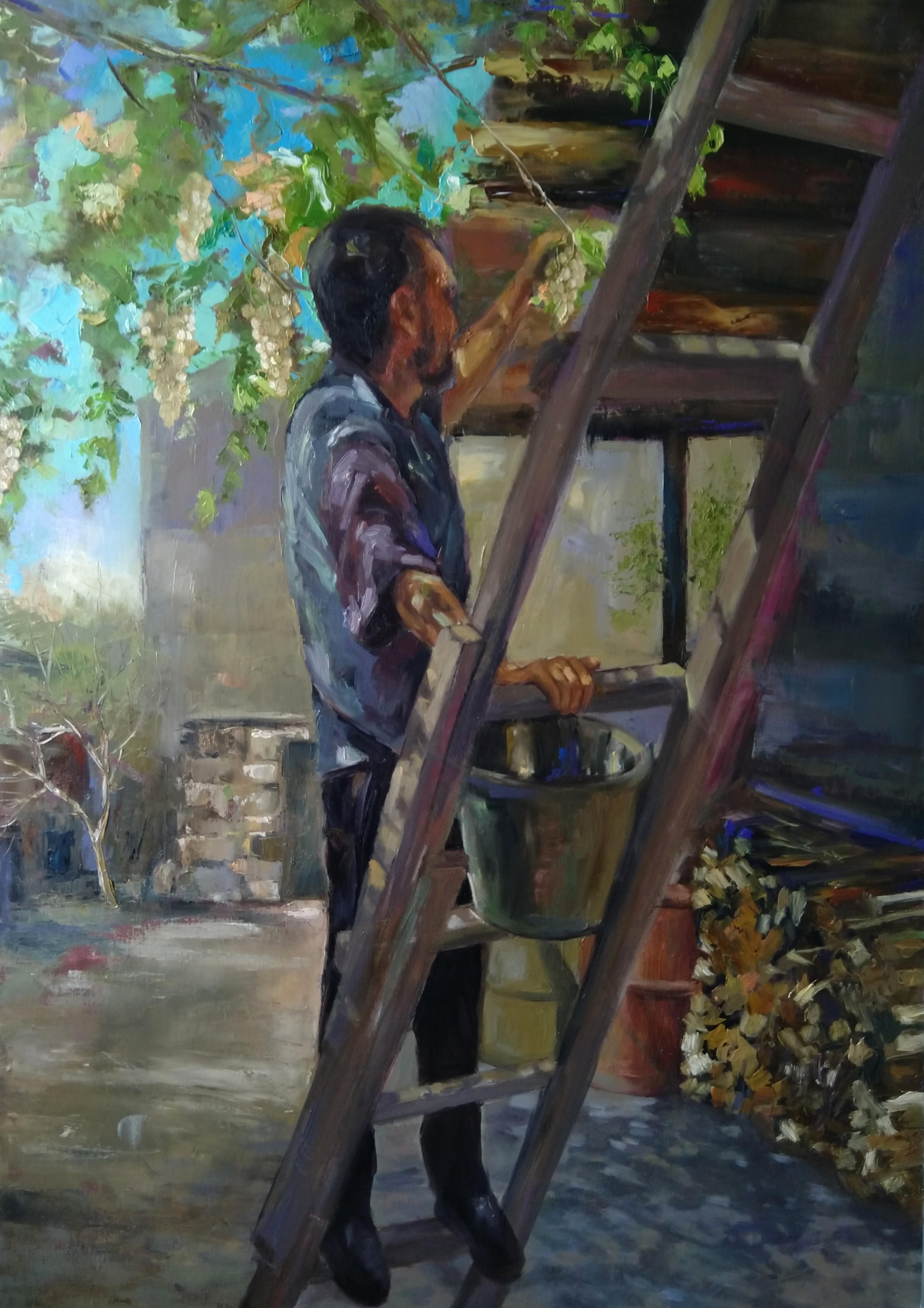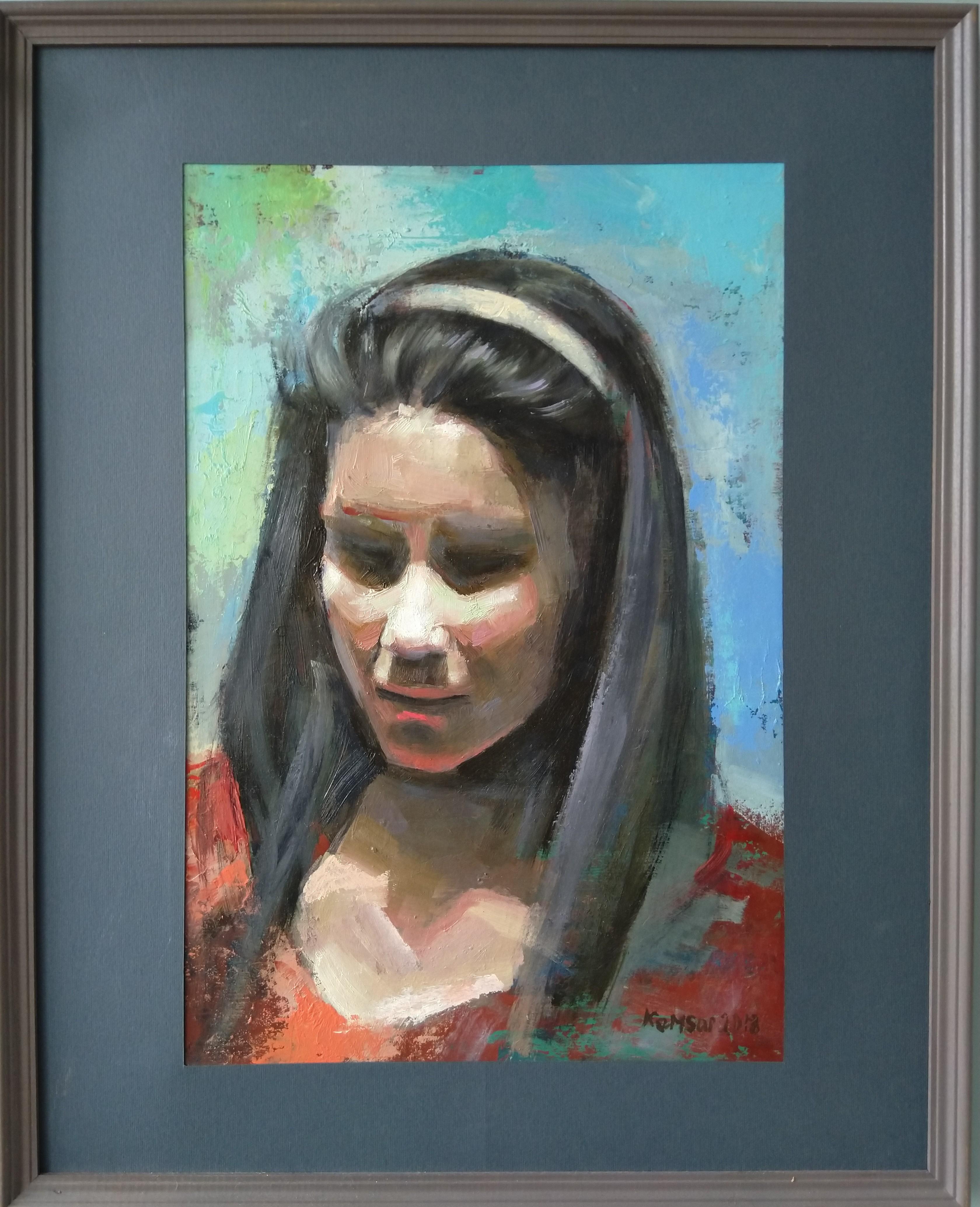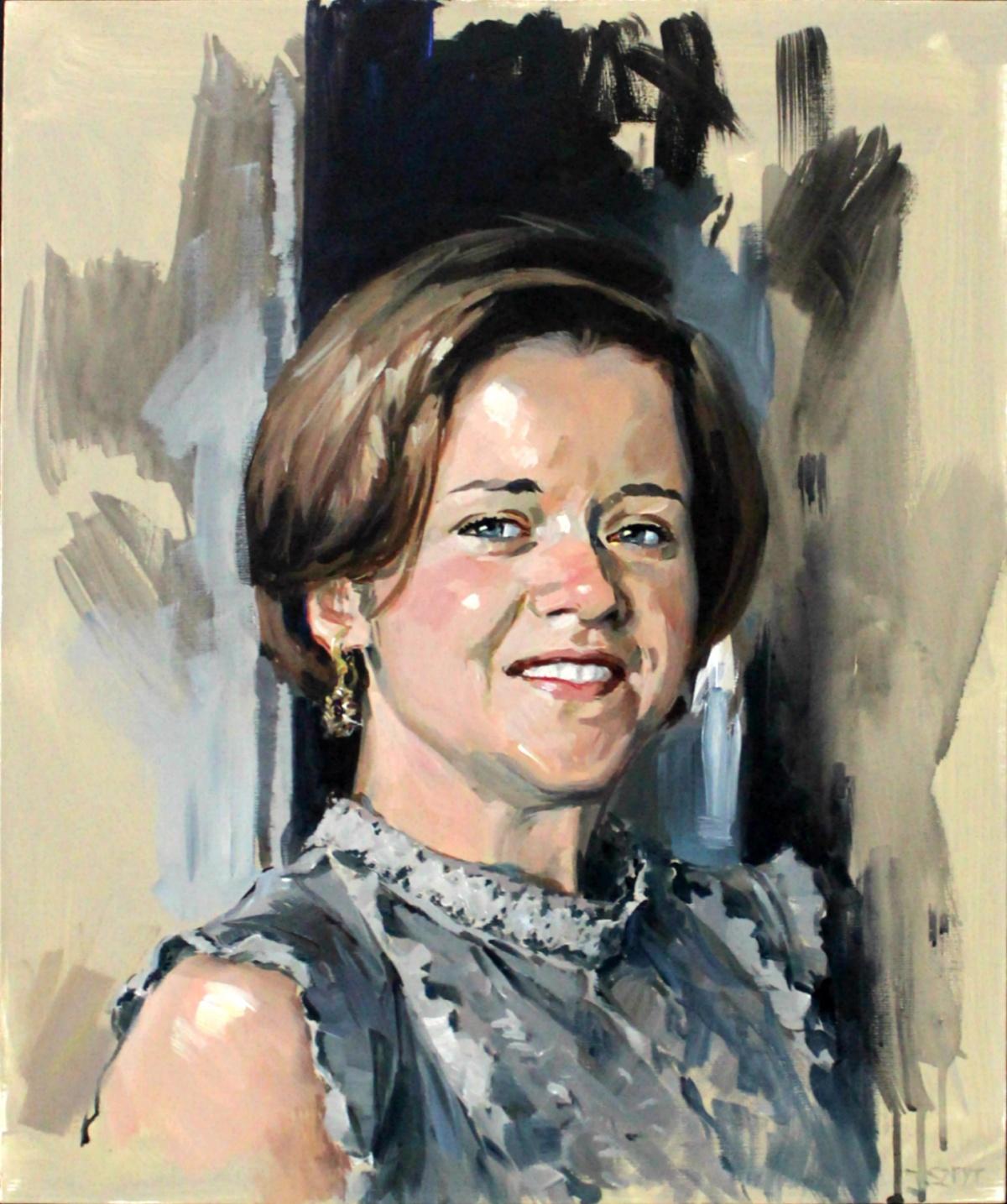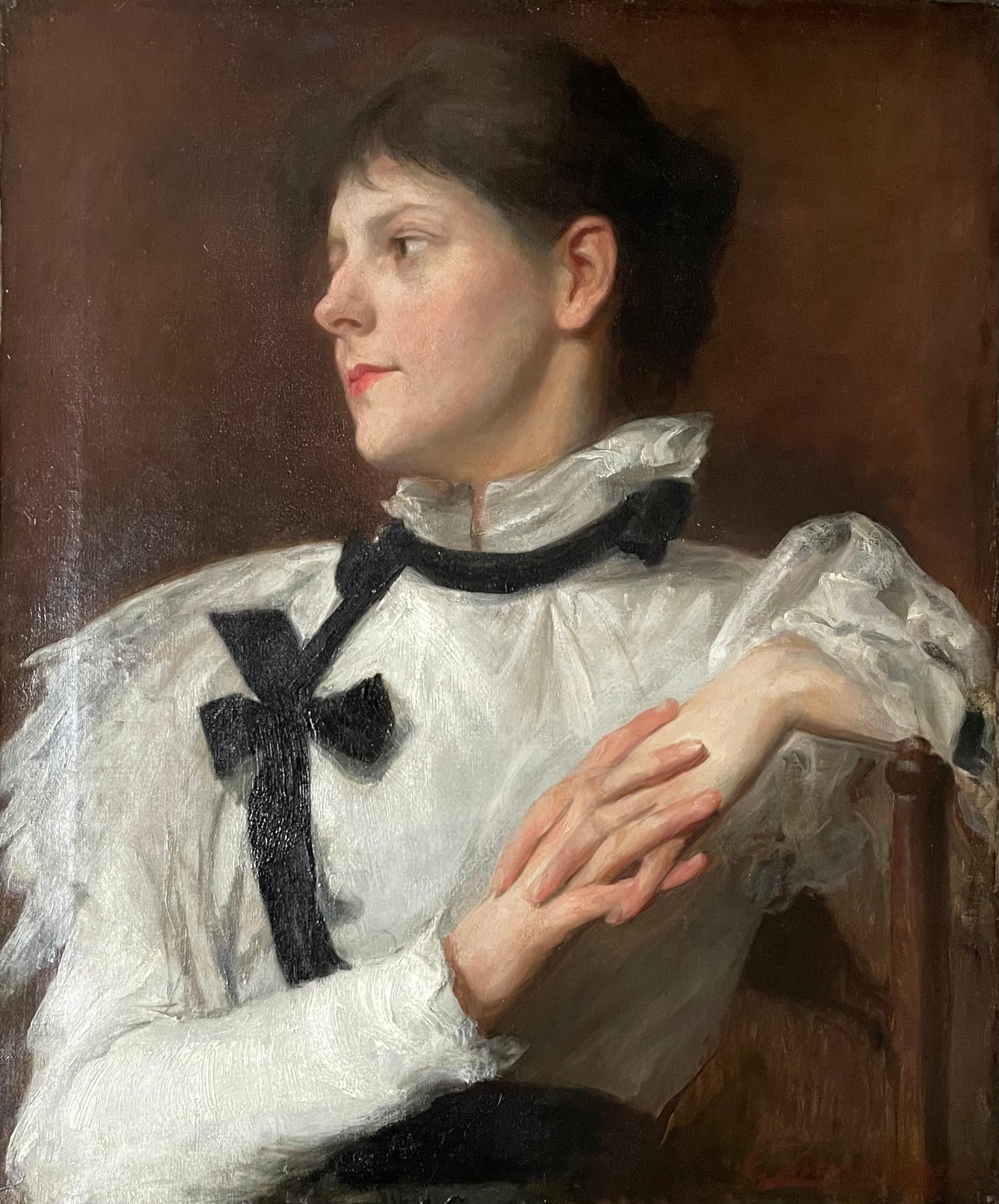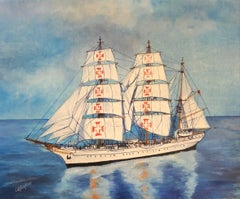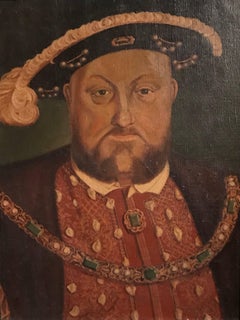
King Henry VIII portrait, oil on canvas
View Similar Items
Want more images or videos?
Request additional images or videos from the seller
1 of 14
UnknownKing Henry VIII portrait, oil on canvasc.1900
c.1900
About the Item
- Creation Year:c.1900
- Dimensions:Height: 19.3 in (49 cm)Width: 15.36 in (39 cm)Depth: 1.19 in (3 cm)
- Medium:
- Movement & Style:
- Period:
- Condition:
- Gallery Location:Cirencester, GB
- Reference Number:1stDibs: LU50932454613

About the Seller
5.0
Platinum Seller
These expertly vetted sellers are 1stDibs' most experienced sellers and are rated highest by our customers.
Established in 1989
1stDibs seller since 2016
3,469 sales on 1stDibs
Typical response time: 2 hours
More From This SellerView All
- Sagres Ship Portrait signed oil paintingBy Louis LetoucheLocated in Cirencester, GloucestershireSagres, 1937 by Louis Letouche (French 1924-2015) oil painting on linen canvas, stretched over board framed Framed size: 16 x 19 inches Superb oil painting by the well listed French marine artist Louis Letouche (1924-2015). The painting portrays the early 20th Century ship titled: Sagres, 1937. The three-masted ship was launched under the name Albert Leo Schlageter on 30 October 1937 at Blohm & Voss in Hamburg for Nazi Germany's Kriegsmarine. The ship was named after Albert Leo Schlageter, who was executed in 1923 by French forces occupying the Ruhr area. Her first commander was Bernhard Rogge. Sagres is a sister ship of the Gorch Fock, the Horst Wessel, and the Romanian training vessel Mircea. Another sister, Herbert Norkus, was not completed, while Gorch Fock II was built in 1958 by the Germans to replace the ships lost after the war. Following a number of international training voyages, the ship was used as a stationary office ship after the outbreak of World War II and was only put into ocean-going service again in 1944 in the Baltic Sea. On 14 November 1944 she hit a Soviet mine off Sassnitz and had to be towed to port in Swinemünde. Eventually transferred to Flensburg, she was taken over there by the Allies when the war ended and finally confiscated by the United States. In 1948, the U.S. sold her to Brazil for a symbolic price of $5,000 USD. She was towed to Rio de Janeiro where she sailed as a school ship for the Brazilian Navy under the name Guanabara. In 1961, Ambassador Teotónio Pereira of Portugal, who was also a man of the sea...Category
1990s Realist Portrait Paintings
MaterialsOil
- ANGLO-AMERICAN SCHOOL C. 1820'S - PORTRAIT OF MERCHANT ON SHIP WITH GLOBE & MAPLocated in Cirencester, GloucestershireArtist/ School: Anglo/ American School, early 19th century. Title: Full length portrait of a seated young gentleman wearing a dark suit, cream waistc...Category
Early 19th Century Realist Portrait Paintings
MaterialsOil, Canvas
- Fine 19th Century French Realist Oil Painting Chef in Kitchen Pantry LarderLocated in Cirencester, GloucestershireLe Chef circle of Théodule-Augustin Ribot (French, 1823 – 1891) oil on board, framed framed: 20.5 x 16.5 inches board: 15 x 12 inches inscribed verso provenance: private collection, ...Category
19th Century Realist Figurative Paintings
MaterialsOil
- Gota Lejon, signed oil paintingBy Louis LetoucheLocated in Cirencester, GloucestershireGöta Lejon, 1746. by Louis Letouche (French 1924-2015) oil painting on linen canvas, stretched over board framed Framed size: 15 x 21.75 inches Superb oil painting by the well lis...Category
1990s Realist Portrait Paintings
MaterialsOil
- Herzogin Cecilie, signed oil paintingBy Louis LetoucheLocated in Cirencester, GloucestershireHerzogin Cecilie, 1902 by Louis Letouche (French 1924-2015) oil painting on linen canvas, stretched over board framed Framed size: 15 x 21.75 inches Superb oil painting by the well listed French marine artist Louis Letouche (1924-2015). The painting portrays the early 20th Century ship titled: Herzogin Cecilie, 1902. Herzogin Cecilie was built in 1902 by Rickmers Schiffbau AG in Bremerhaven. She was yard number 122 and was launched on 22 April 1902. Completion was on 7 June that year. She was 334 feet 8 inches (102.01 m) long, with a breadth of 46 feet 3 inches (14.10 m) and a draught of 24 feet 2 inches (7.37 m). Herzogin Cecilie was built for Norddeutscher Lloyd Bremen. Unlike other contemporary German merchant sailing ships, the black Flying-P-Liners or the green ships of Rickmers, she was painted in white. She was one of the fastest windjammers ever built: she logged 21 knots at Skagen. The tall ships of the time remained competitive against the steamers only on the longer trade routes: the Chilean nitrate trade, carrying salpeter from Chile to Europe, and the Australian wheat trade, carrying grain from Australia to Europe. Both routes required rounding Cape Horn routinely, and were not well suited for steamers, as coal was in short supply there. Herzogin Cecilie was one of the fastest merchant sailing ships of her time, on a par with the Flying-P-Liners. The trip around Cape Horn from Portland (Oregon) to The Lizard (England) was done in 1903 in only 106 days. At the outbreak of World War I, she was interned by Chile, returning to Germany in 1920, only to be given to France as reparation, and subsequently sold to Gustaf Erikson (24 October 1872 – 15 August 1947) of Finland for £4250. She was homeported at Mariehamn.[2] As the freight rates for salpeter had dropped after the war, Gustaf Erikson sent her to bring grain from Australia. In so-called grain races, several tall ships tried to arrive first in Europe, to sell their cargo for a higher price, as told, for example, in The Great Tea Race of 1866 or The Last Grain Race. Typically, ships were loaded in the Spencer Gulf area, Port Victoria, South Australia or Wallaroo, South Australia, and travelled to Europe, with ports on the British Isles like Queenstown, Ireland or Falmouth, Cornwall being considered as the finish. After "winning" four times prior to 1921, she again won the grain race four times in eleven trips from 1926 to 1936. In 1927, when Herzogin Cecilie covered Port Lincoln (South Australia) –Falmouth, London and won a race against the Swedish ship Beatrice. Alan Villiers was on board, which would result in his book Falmouth for Orders, and later a trip aboard the barque Parma. Wreck of the Herzogin Cecilie in south Devon. With Sven Erikson as her Captain and Elis Karlsson her First Mate, the ship left Port Lincoln in South Australia on 21 January 1935, with a cargo of wheat, and after taking a more southerly route than usual, reached Falmouth for Orders on 18 May making her passage of 86 days the second fastest ever. Herzogin Cecilie was making for Ipswich in dense fog, when, on 25 April 1936, she grounded on Ham Stone Rock and drifted onto the cliffs of Bolt Head on the south Devon coast. After parts of the cargo were unloaded, she was floating again, only to be towed in June 1936 to Starhole (Starehole) Bay at the mouth of the nearby Kingsbridge Estuary near Salcombe, and beached there.On 18 January 1939, the ship capsized and sank. The remains of the ship sit at a depth of 7 metres at 50°12.82′N 3°47.02′W. The timber and brass portholes from the chart room...Category
1990s Realist Portrait Paintings
MaterialsOil
- Regina Maris Ship, signed oil paintingBy Louis LetoucheLocated in Cirencester, GloucestershireRegina Maris, 1908 by Louis Letouche (French 1924-2015) oil painting on linen canvas, stretched over board framed Framed size: 16 x 19.25 inches Superb oil painting by the well li...Category
1990s Realist Portrait Paintings
MaterialsOil
You May Also Like
- Armenian Contemporary Art by Kamsar Ohanyan - BlondeBy Kamsar OhanyanLocated in Paris, IDFOil on canvasCategory
2010s Realist Portrait Paintings
MaterialsCanvas, Oil
- Armenian Contemporary Art by Kamsar Ohanyan - Warm Day on SeptemberBy Kamsar OhanyanLocated in Paris, IDFOil on canvasCategory
2010s Realist Portrait Paintings
MaterialsCanvas, Oil
- Armenian Contemporary Art by Kamsar Ohanyan - LucyBy Kamsar OhanyanLocated in Paris, IDFOil on canvasCategory
2010s Realist Portrait Paintings
MaterialsHandmade Paper, Oil
- Armenian Contemporary Art by Kamsar Ohanyan - The Peaceful EveningBy Kamsar OhanyanLocated in Paris, IDFOil on canvas Kamsar Ohanyan is an Armenian artist born in 1991 who lives and works in Yerevan, Armenia. He studied in Yerevan at State Pedagogical University with Kh. Abovyan at th...Category
2010s Realist Portrait Paintings
MaterialsCanvas, Oil
- Ewa - XXI Century, Contemporary Figurative Oil Painting, Realism, PortraitBy Janusz SzpytLocated in Warsaw, PLJanusz Szpyt was born in 1960, he is a Polish painter. He graduated from the Graphic design faculty and painting from the Academy of Fine Arts in Krakow. 1983 onward, he became the m...Category
2010s Realist Portrait Paintings
MaterialsCanvas, Oil
- Le Ruban Noir - Early 20th Century British Portrait by Edmund van SomerenLocated in London, GBEDMUND VAN SOMEREN (British 1875-1963) Le Ruban Noir Signed l.r.: E L van Someren; signed, inscribed and dated on the reverse: “Le Ruban Noir”/ E L van Someren 1903 Oil on canvas F...Category
Early 1900s Realist Portrait Paintings
MaterialsOil

